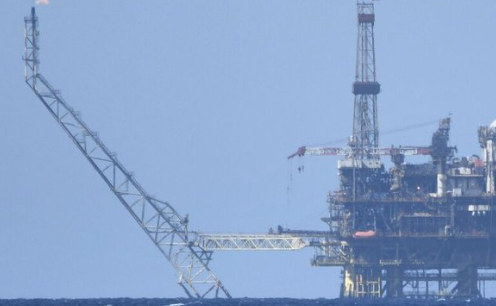Oil Production Capacity: Libya has one of the largest proven oil reserves in Africa and is a major oil producer. As of recent estimates, Libya’s oil production capacity is around 1.2 to 1.3 million barrels per day (bpd). However, actual production levels can fluctuate significantly due to political instability, internal conflicts, and infrastructural challenges.
Annual Oil Production: Assuming Libya produces at a consistent rate of about 1.2 million bpd, the annual production can be estimated as follows:
Oil production in Libya came to a standstill on Tuesday after the eastern rival government announced a halt to all oil production and exports. This decision, made on Monday, has disrupted operations at several key oilfields across the country, including the El Feel oilfield in southwestern Libya, as confirmed by engineers on the ground.
#Libya halts #oil production; prices drop three percent globallyhttps://t.co/827EmFA5X6 pic.twitter.com/qOTlkaOgh1
— Roya News English (@RoyaNewsEnglish) August 27, 2024
The halt in production affects Libya’s crude oil output, which typically stands at about 1.2 million barrels per day (bpd). The eastern and southeastern oilfields have either stopped or significantly reduced production, with local operators indicating a gradual shutdown across the country. This disruption follows a deepening political crisis in Libya, triggered by a conflict over the leadership of the Central Bank of Libya, the only internationally recognized repository for the country’s oil revenues.
The political division between Libya’s rival governments has escalated, with the eastern government based in Benghazi—supported by military leader Khalifa Haftar—declaring the halt in oil production. Despite its lack of international recognition, the eastern government and Haftar control most of Libya’s oilfields, giving them significant leverage over the country’s oil exports.
The current crisis centers on a dispute between the eastern and western governments regarding the leadership of the Central Bank of Libya. The Tripoli-based government, recognized internationally and situated in the west of the country, is attempting to replace the current governor, Sadiq Al-Kabir. This move has sparked renewed tensions and contributed to the decision by the eastern government to halt oil production, further threatening Libya’s already fragile oil sector.
The UN warns that the decision to stop oil production will bring economic chaos. Libya is OPEC’s 7th largest producer (1,17 MBD) https://t.co/xxl7V6Lmbs
— Carlos H. Brandt S. (@brandtcarlos) August 27, 2024
The United Nations Support Mission in Libya (UNSMIL) expressed “deep concern” over the deteriorating situation, emphasizing that unilateral actions could have severe consequences for Libya’s economy and stability. UNSMIL warned that the ongoing conflict could lead to financial and economic collapse, urging all parties to resolve their disputes through dialogue rather than unilateral decisions that risk further destabilization.
The halt in Libya’s oil production not only impacts the country’s economy but also affects the global oil market, given Libya’s role as a member of OPEC. The ongoing political instability highlights the fragile nature of Libya’s oil-dependent economy and the complex power dynamics that continue to shape its future.
More Information
- Oil Exports: Libya exports most of its oil production since it has a relatively small domestic consumption. The country’s exports are a significant source of revenue, accounting for most of its foreign exchange earnings. The volume of oil exported can vary due to production levels, global demand, and domestic political factors.
- Annual Oil Export Revenue: The revenue from oil exports depends on the global oil prices. With Brent crude oil prices fluctuating between $60 to $100 per barrel in recent years, Libya’s annual oil export revenues can vary widely. For example, if Libya exports around 90% of its production, this could mean exporting roughly 394 million barrels per year. At an average price of $80 per barrel, the annual revenue from exports could be:
- 394 million barrels x $80 = approximately $31.5 billion.
- Political Instability: Libya’s oil production and exports are highly susceptible to political instability and conflict. Frequent shutdowns of oil fields and export terminals due to armed groups and political disputes often impact the country’s ability to produce and sell oil consistently.
- Infrastructure Challenges: The country’s oil infrastructure has suffered due to years of conflict and lack of investment. Repairs and maintenance are often delayed, which can affect production levels.
- OPEC and Global Market Dynamics: As a member of OPEC, Libya’s production levels can also be influenced by the organization’s agreements and global market dynamics. However, due to its internal challenges, Libya is often exempted from OPEC’s production cuts.
Key Points:
i. Libya’s oil production was halted after the eastern government announced a stop to all oil output and exports.
ii. The El Feel oilfield and several other fields have ceased operations or reduced production, affecting Libya’s usual output of 1.2 million barrels per day.
iii.The political crisis stems from a conflict over the leadership of the Central Bank of Libya, deepening the division between the eastern and western governments.
iv. The UN has expressed concern over the unilateral actions, warning of the potential economic collapse and urging for resolution through dialogue.
v. Libya’s halted oil production threatens both the national economy and global oil markets, reflecting the country’s ongoing instability.
Al Santana – Reprinted with permission of Whatfinger News

